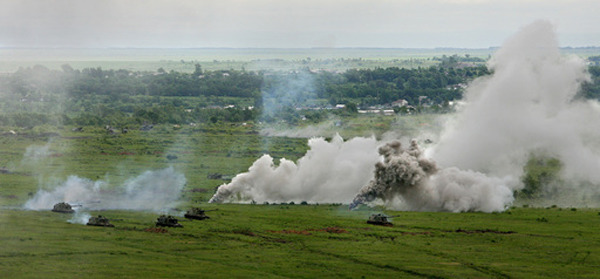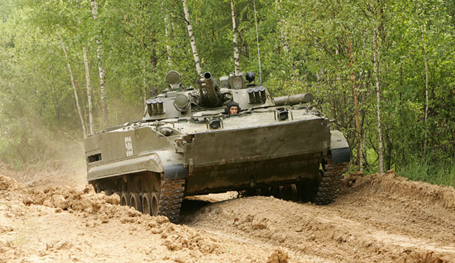Vostok 2010 Military Drills Draw to End

The Russian Navy's Northern, Black Sea and Pacific fleets are currently involved in the Vostok-2010 large-scale military exercises in Siberia and the country's Far East.

The exercises involve several dozen warships and support ships. Moreover, the Northern and Black Sea fleets have contributed their largest and most powerful warships - the Pyotr Veliky (Peter the Great) and Moskva guided missile cruisers, respectively.

Naval forces are carrying out simulated combat missions, including anti-submarine warfare (ASW), attacks on warships, repelling a simulated amphibious landing and supporting its own amphibious-landing operation aimed at seizing an enemy beachhead.

The Navy is also practicing cooperation with Air Force units to repel simulated air strikes. The Vostok-2010 military exercises differ from previous exercises in that they prioritized humanitarian and peacekeeping missions.
The Navy is also practicing cooperation with Air Force units to repel simulated air strikes. The Vostok-2010 military exercises differ from previous exercises in that they prioritized humanitarian and peacekeeping missions.

The Navy has always ranked among the most expensive and hi-tech branches of the military. Moreover, it sometimes takes decades to build up large battle-worthy naval formations - the longest cycle of any branch. Mistakes in naval development are extremely expensive, because it can take the lifespan of one or two generations to correct them.
The Navy has always ranked among the most expensive and hi-tech branches of the military. Moreover, it sometimes takes decades to build up large battle-worthy naval formations - the longest cycle of any branch. Mistakes in naval development are extremely expensive, because it can take the lifespan of one or two generations to correct them.

What role will the Russian Navy play in the restructured Armed Forces? How will the Navy look after these extensive military reforms are complete? Although top political and military leaders say the Navy plays an important role in Russia's Armed Forces, it is obvious that the amount of warship construction and deadlines for projects directly depend on the country's economic potential.
What role will the Russian Navy play in the restructured Armed Forces? How will the Navy look after these extensive military reforms are complete? Although top political and military leaders say the Navy plays an important role in Russia's Armed Forces, it is obvious that the amount of warship construction and deadlines for projects directly depend on the country's economic potential.

Considering the high cost of building capital warships, their numbers are likely to be limited in the next few decades. Russia will have to strengthen its Navy in some other way if it hopes to be able to deal with the superior forces of a potential enemy.

By combining the potential of a few hard-hitting weapons systems, such re-deployment can expand task-force potential many times over. This time, the Navy has established a unit comprising two guided missile cruisers and three anti-submarine warfare ships. Objectively speaking, the Pyotr Veliky and Moskva cruisers wield extremely powerful air-defense weaponry matching the capabilities of U.S. Navy and Japanese Maritime Self-Defense Force warships equipped with Aegis combat systems.



